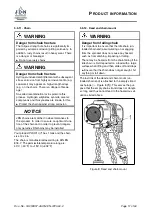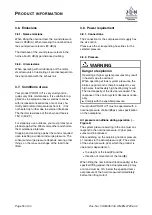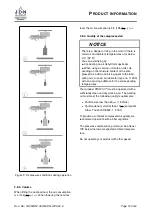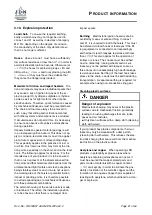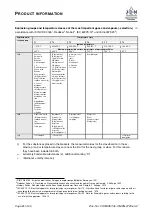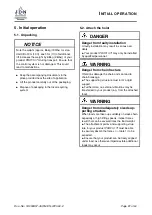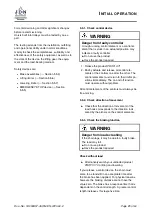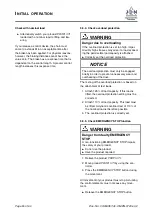
P
RODUCT INFORMATION
3.5.11. Chain
WARNING
Danger from chain fracture
The fatigue strength of chains is significantly im-
paired by extreme corrosion (pitting corrosion). In
addition, rusty chains result in heavy wear. There
is a danger of breakage!
I
Do not use rusty chains
WARNING
Danger from chain fracture
Hydrogen-induced embrittlement with subsequent
stress corrosion from highly corrosive media (e.g.
sea water) may appear on high-strength alloys
(e.g. on the chain). There is a danger of break-
age!
So-called recombination toxins promote this
process. Hydrogen sulphides, cyanide, arsenic
compounds and thiocyanates are known for this.
I
Protect the chain against strong corrosion
NOTICE
JDN chains are matched in close tolerances to
the sprocket. In order to ensure an optimum func-
tion of the chain and in order to prevent dangers,
only genuine JDN chains may be installed.
Your product
PROFI 3 TI
has 1 falls and the chain
size 13 x 36.
The chain is manufactured according to DIN EN
818-7. The permissible temperature range is -
40
◦
C (-40
◦
F) to +150
◦
C (+302
◦
F).
3.5.12. Dead end chain mount
WARNING
Danger from falling chain
It is important to ensure that the idle chain (un-
loaded chain end) accumulating on or sagging
from the sprocket does not cause any hazard,
such as from catching, impacting or falling.
There may be hazards from the chain falling if the
idle chain is first deposited on a load with a large
surface when lifting and then slides off and drops.
I
Ensure that the chain does not get caught, hit
anything or fall down.
The last link of the dead end chain mount (un-
loaded chain end) is attached to the empty strand
anchorage (
,
→
Figure 8
(1)
). This serves the pur-
pose that the empty chain strand does not dangle
so long and thus cannot lead to the hazardous sit-
uations listed above.
Figure 8: Dead end chain mount
Doc.-No.: VA053957-40-OM-EN-0720-60-2
Page
17
of 60















